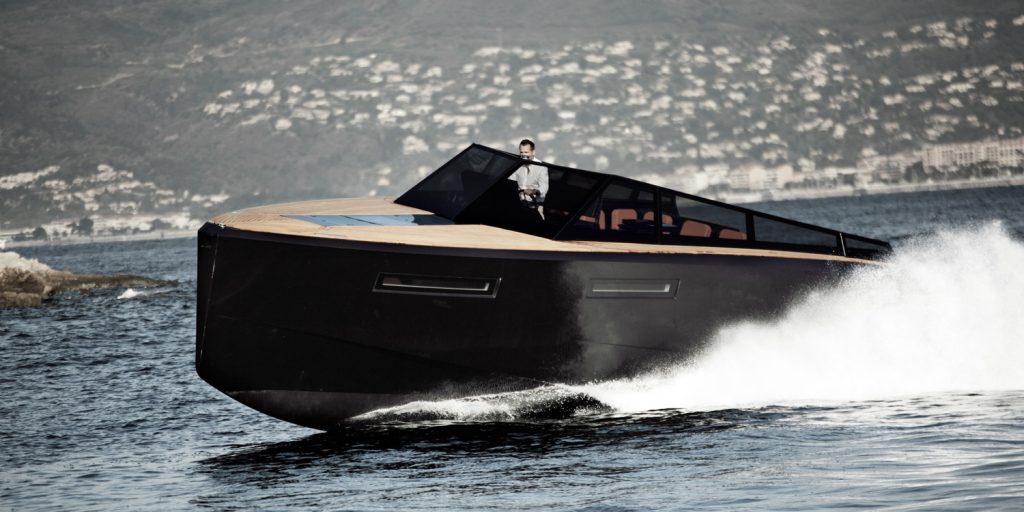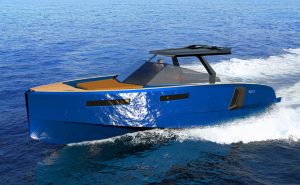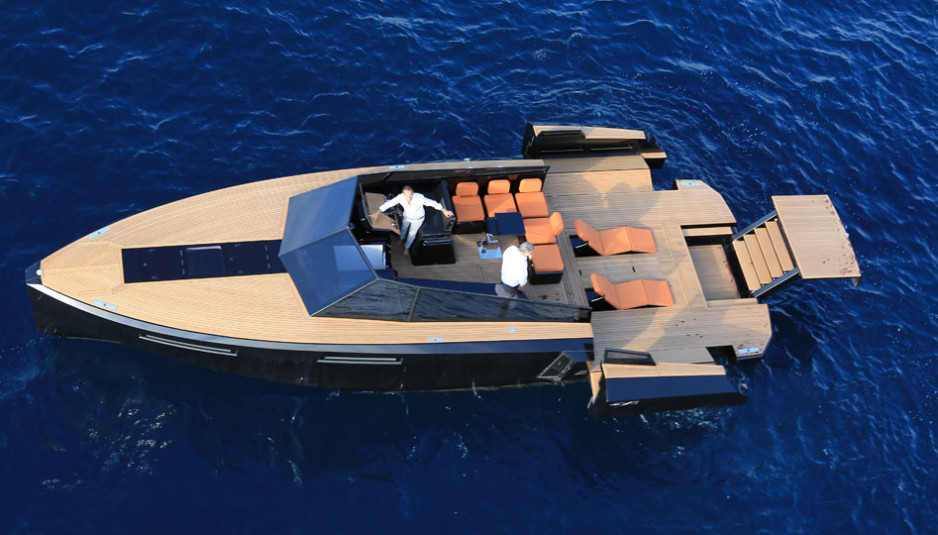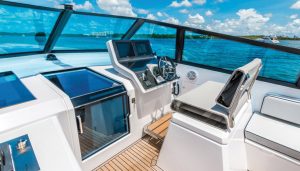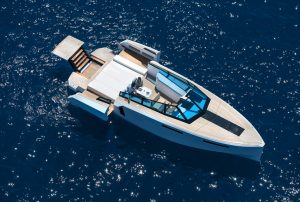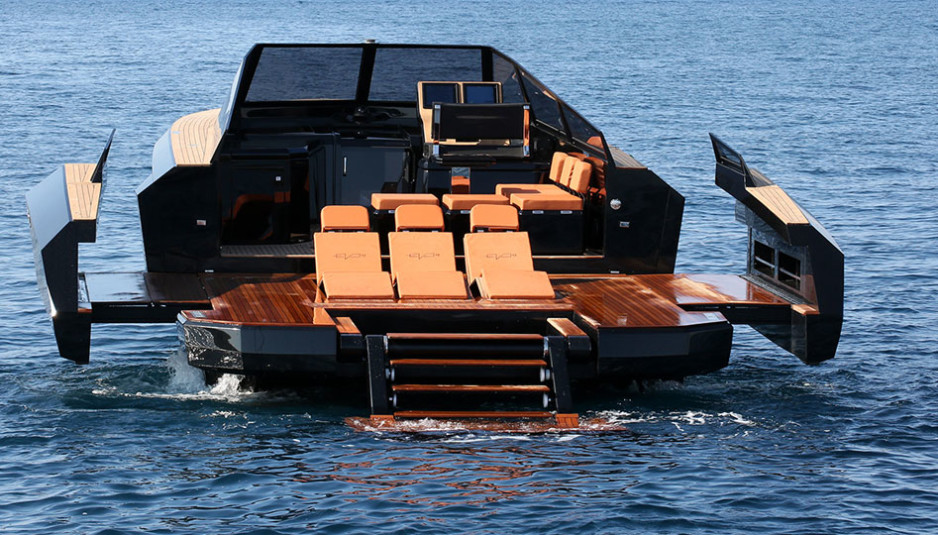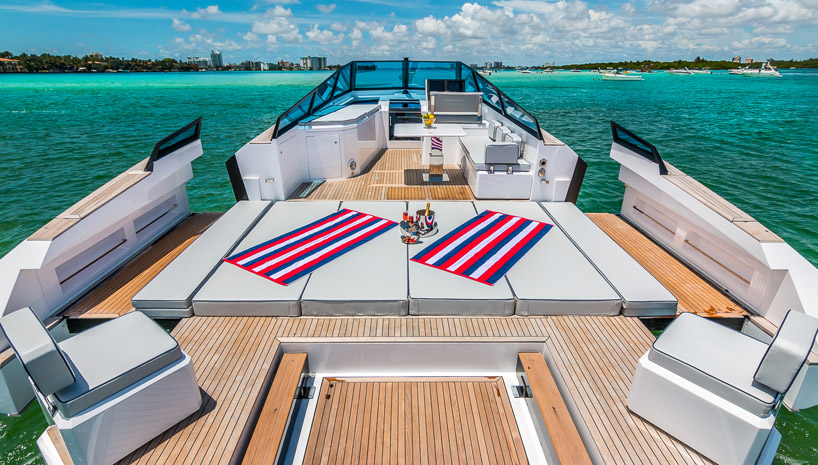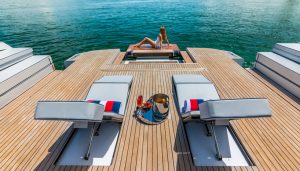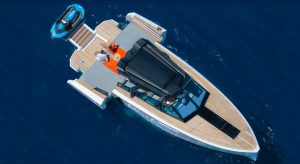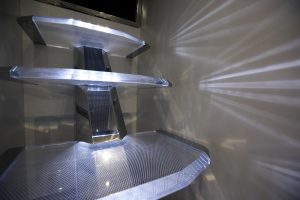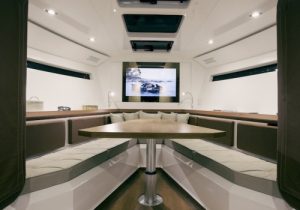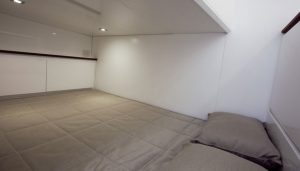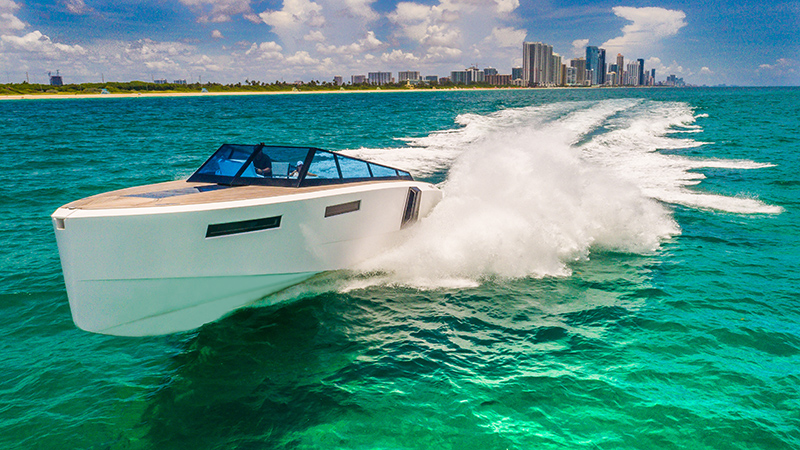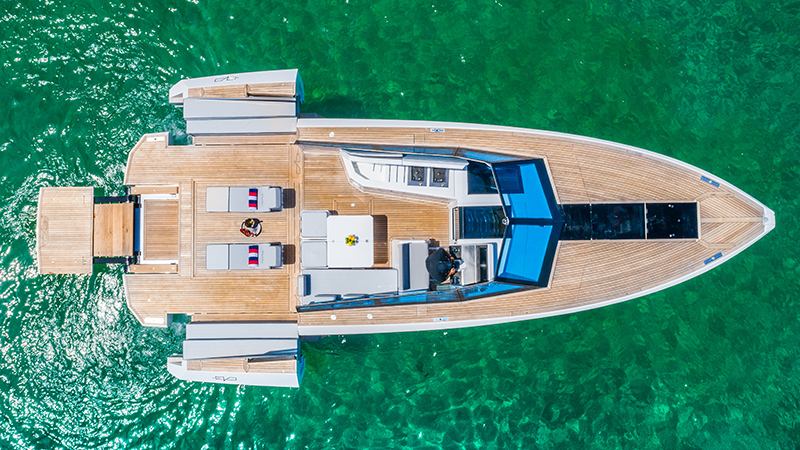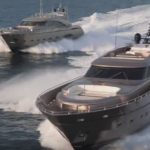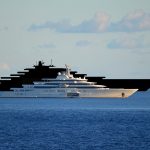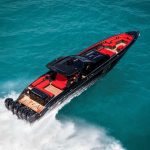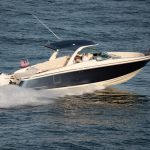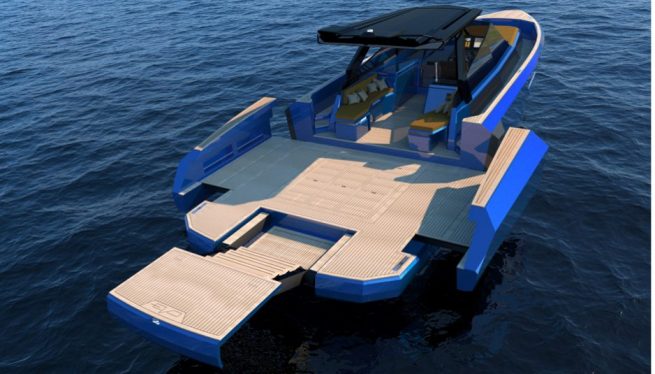
So what is the particularity of this boat? It is that all that is needed develops in the stern area. Logically at the bow there are all the elements to moor the bollards and the anchorage system are concealed, the fenders are locked inside automatic couplings that are also hidden. The chain locker has been designed with a hydraulic opening while the anchor’s nose is electromechanical overturning. The cockpit is freely configurable one option is that which provides cubed walled seats with a dining table with hydraulic lifting with retractable kitchen cabinet containing the induction hob with four burners, worktop and sink, while the fridge is located under the seat guide with a capacity of up to 180 l (47.5 gal) organized with a rather functional basket system.
Under the cockpit, a large full-beam stowage compartment houses the safety features and the most cumbersome on-board objects. In the Evo 43 the cockpit can be shaded with awning.
Very special is the dashboard where a panel of graceful shape of wood or carbon collects all the management equipment including the joystick connected to two Volvo Penta IPS 600 of 435 hp each, which together with the deep V hull allow the boat to touch the maximum speed of 40 knots and a comfortable cruising speed of 32 knots with a range of about 300 nautical miles. But other possibilities of motorization are not excluded.
But the transformist gifts of this model do not end here. At the stern there is also the “Transformer”, a wide platform, perfectly integrated in the “beach” that can be extended with great flexibility of use thanks to a hydraulic system. The Transformer rotating almost 270 ° can be used as a safe and easy support for embarking or disembarking from the dock, as a ladder to go up easily on board, as a platform height adjustable dives or to launch or wing a tender or a jet ski.
All the servomechanisms for safety are separate and independent from each other so that everything can be done manually as for example the closing and opening of the stern walls. A small revolution that makes the Evo 43 unique. A mix of ideas and technologies born in the Gulf of Naples where the studio of Valerio Rivellini is based, which states: “In my projects I always try to go beyond the schemes and challenge traditions, but this does not mean that my look is only projected towards modernity. I think that the best ideas come from the mixture of styles – even apparently in contrast. “
Regarding the interiors, noble materials such as teak, crystal, leather and precious fabrics have been used to create simple and refined settings.
Below deck is accessed through a staircase made of tempered glass, illuminable by the wide steps. The layout includes two cabins for a maximum capacity of four beds a bow dinette with a V-shaped sofa and a foldaway table that turns into a double bed and another to the opposite side aft where there is a double cabin complete wooden and ceramic bathroom with shower and sink. The hull was built with a composite material, through a process of vacuum infusion, a system that allowed a reduction in displacement of 20% compared to boats of the same type.
Lascia un commento
Devi essere connesso per inviare un commento.


